The future of electric watercraft is on the horizon.

If you read my About Me page you know I like to fish and have owned a couple fishing boats over the years. What I’m about to present is something I still can’t wrap my head around, but it appears to be very cool at first glance.
Having electric motors on boats is nothing new as trolling motors most often used by fisherman have been around for decades, but primary propulsion via an electric motor…that is new. A company based in Seattle by the name of Pure Watercraft is pioneering the electric propulsion space in modern watercraft and has designed a stand alone fully electric outboard motor for boat applications that have a power rating between 25 and 50 HP. Their reasoning for this limit is not because they can’t go bigger, but rather this power specification represents the largest category of boats sold today. It’s worth noting General Motors recently acquired 25% of this company, so I would say this product has great potential given the access to significant capital and engineering. Let’s run through the details related to the system and I will add some perspective to the merits through my own bass boat ownership experience.
How does the Pure Watercraft system work?
This system is marketed as a plug and play unit that will bolt up to the typical configuration on the transom of known boats such as Tracker and fully replaces the conventional outboard gas powered unit up to 50 HP ratings. The proprietary rigging comprised of cables are similar to that of a conventional boat with connections routed from the helm to the transom. In lieu of fuel tanks, the rear of the boat would house one or more battery packs that are proprietary to the system and placed in an arrangement allowing for proper weight distribution. A single battery pack is stated to produce up to 25 kW of output power and according to the manufacturer multiple packs can be connected in series to extend the range of the electric motor.
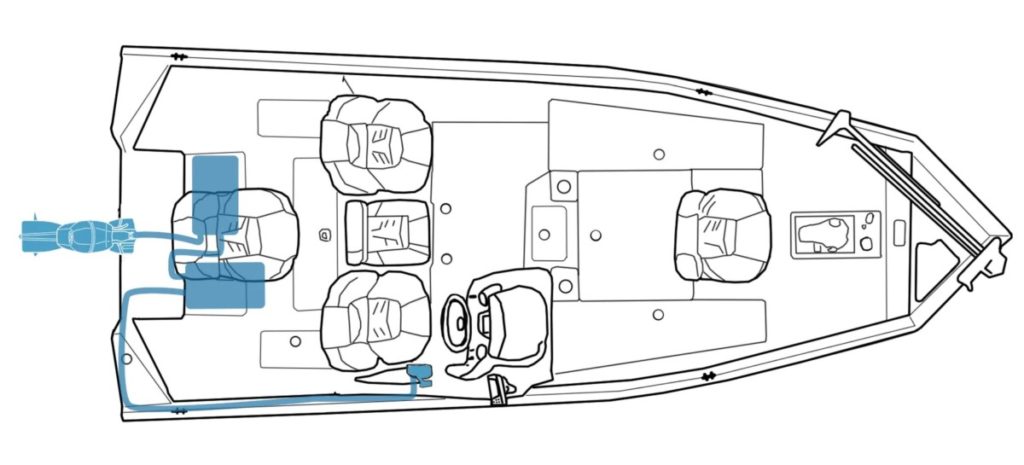
The system utilizes a very helpful onboard technology allowing a Bluetooth connection to deliver real time performance information to boat operator at the helm and via an app that can be downloaded to a smartphone. The GPS capable throttle provides operational information to the driver via a small integrated screen including: state of charge, speed and remaining travel time. This information is critical for this type of application and Pure Watercraft has leveraged technology to do just that. I have firsthand experience with similar technology thru my current lithium battery set up on my boat and I must say having real time status of my batteries offers me a peace of mind on the water.
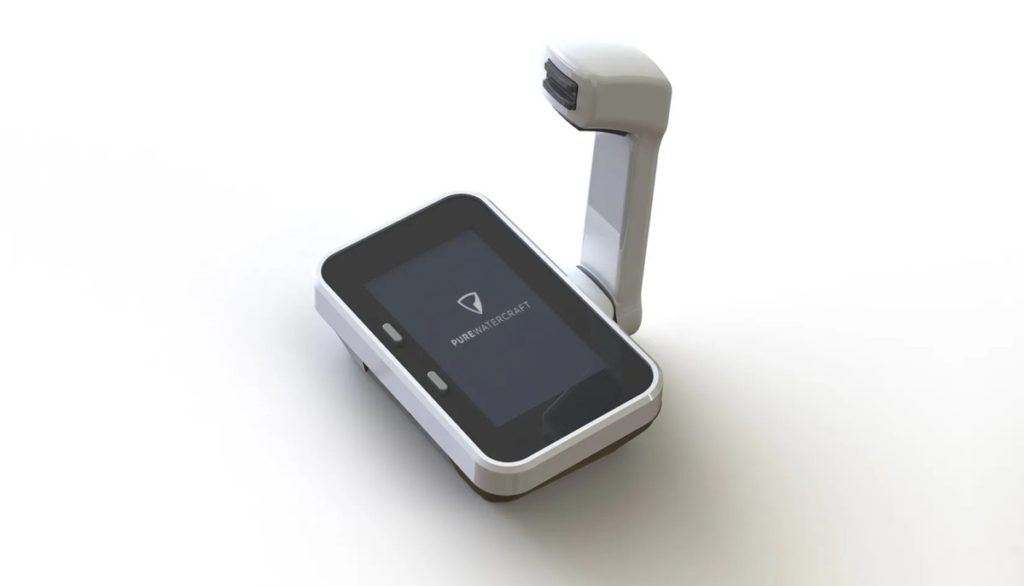
The entire system ships with all components necessary to convert a conventional gas set up to the fully electric set up. You can find a video on their website that demonstrates how the system is installed.
Now I honestly can’t tell you how this unit performs in the real world other than having watched a couple video’s, but from what I can gather it operates very much like a conventional set up. The system features an outboard unit mounted on the transom, which is prop driven and offers a power tilt/trim function. The rear unit is connected via a cable system to a traditional steering wheel and throttle mounted at the helm using a typical configuration. All of the required components are shipped in a single package and ready for install by a competent marine mechanic.
I have owned a few boats in my life and while not terribly difficult to maintain there is still a need for attention to gas motors. Whether it be for routine maintenance or winterization the gas motors have various components that require annual attention. The thought of being able to eliminate all that
maintenance and in return receive a maintenance free, emission free and relatively silent propulsion is very intriguing. I would also point out a remarkable reduction in operating cost assuming the reliability is on point.
I’m trying to picture myself in my fishing boat propelled at speed and all I can hear is the wind in my ears and the water being displaced by the hull. Seems almost illogical this would even be possible.
I should cover some necessary statistics provided by the manufacturer on this technology to bring things into perspective. Before I reveal the manufacturer numbers, let’s first establish the operating numbers are based on a Tracker 175 TXW being the subject boat they chose for testing purposes. For those of you not familiar, this is a 17’7″ aluminum hull boat that is rated for up to a 75 hp outboard gas motor with a 21.5 gallon fuel capacity that has a well established following in the recreational fishing world. In fact, these are the boats you will find at Bass Pro Shops across the country.
How does the Pure Watercraft system compare to a gas operated system?
In order to make a proper comparison we need to consider a Tracker 175 TXW equipped with a 50hp motor as that is the stated equivalent according to Pure Watercraft. Following my research this particular configuration with a conventional gas motor would result in a top speed of up to 35 mph and offer a range over 50 miles depending on throttle management. I will also point out, I owned a similar boat not all that long ago and I can attest these performance stats are within reason.
According to testing performed by Pure Watercraft using the same Tracker 175TXW with their mounted electric outboard motor and battery pack, the test boat can achieve speeds up to 24 mph with a range of 41 miles on a single charge.
While there is a performance gap between the electric and the gas powered boat, it’s not terribly different. I think it’s also worth noting that typical buyers of the Tracker 175 TXW are not as demanding of performance as most tournament anglers who put in long days and often fish big water. Generally speaking you will find boats that are right at or just beyond 20′ in length powered by 225 hp motors or higher on the tournament trails.
What is the range of the Pure Watercraft system?
The company claims the aluminum fishing boat equipped with the electric outboard and two battery packs can troll up to 3 mph for 50 hours while a speed of 25 mph will only get you roughly 1 hour of operation.
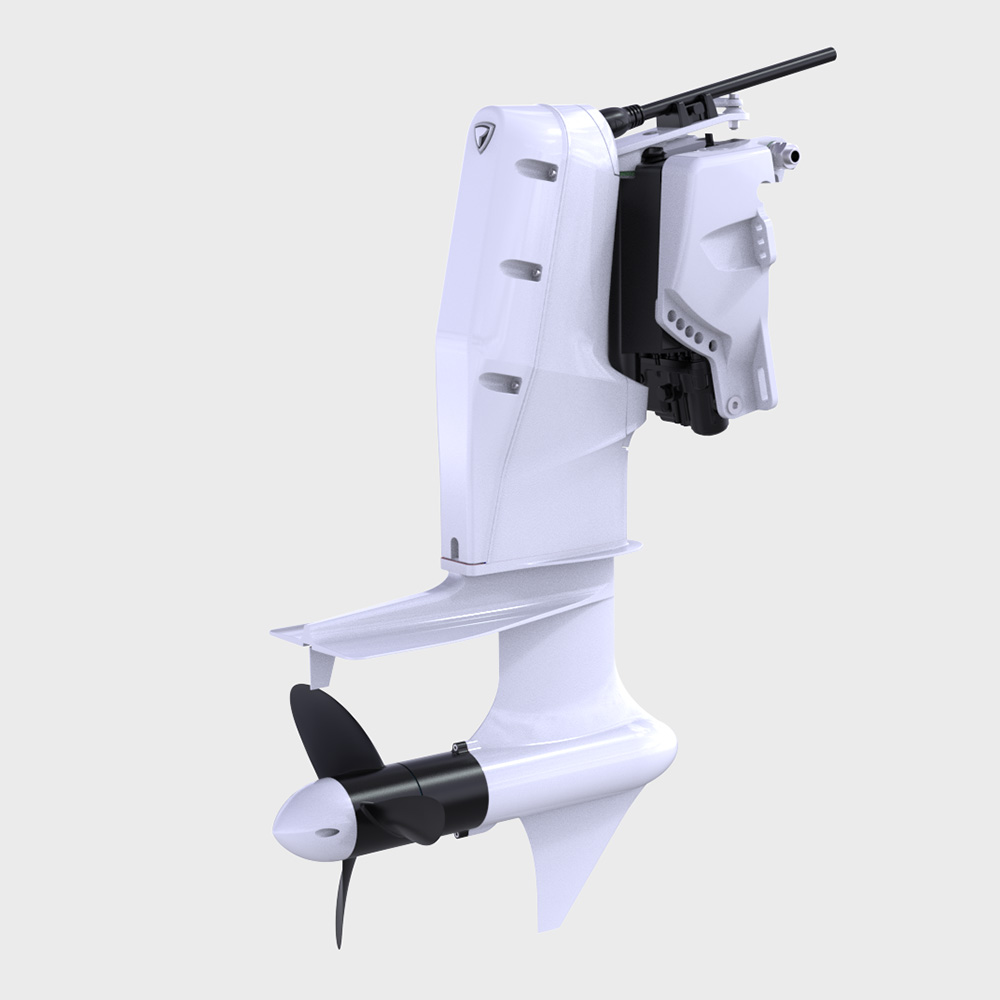
Now that we have addressed the performance differences I would be overlooking the obvious if I didn’t address the battery configuration. Conventional bass boats are set up to require a single starting battery that provides cranking amps to start the gas motor. You would typically see an AGM battery specified for this application and I think its worth noting these batteries weigh in around 45 lbs. In the electric system, a proprietary battery pack is necessary to deliver power to the outboard unit. This single battery pack weighs in a 118 lbs. which is significantly heavier than a conventional battery. I must remind you how this actually balances out due to the trade off in weight by the actual motors. The Pure Watercraft outboard unit weighs 112 lbs. and when compared to its conventional gas equivalent (50 HP) which comes in at a hefty 253 lbs. leaves a margin of 135 lbs easily offsetting the weight of the battery pack. If you tally the numbers the electric motor system has a combined weight of 230 lbs edging out the conventional motor and battery set up that weighs in at 298 lbs. Keep in mind I have yet to calculate the fuel weight, so this is yet another comparison that must be flushed out.
This electric motor in its current form could conceivably work for a specific type of recreational fishermen that frequents smaller to medium size lakes and doesn’t need to make long runs between fishing spots. I would also add the system is not exclusive to fishing boats, but can also be used on pontoon boats and other light watercraft applications.
Having fished on many boats as a co-angler I will point out the footprint of the electric motor opens the entire back deck for the angler. As you can see in the pictures, the motor sits very low at the transom and unlike a conventional motor does not obstruct the anglers casting angles. I hate to mention how many times I’ve made contact with a pristine motor cowling fishing a heavy jig on the rear deck. I can confidently say this is a significant improvement for the co-angler and a welcome one at that. The only caveat would be if the boat utilized shallow water anchors and well that obstruction would present its own challenges.
Although the battery pack can also deliver continuous 12V (10amp) power to additional electronics often found on boats I can only imagine this reduces the operating range of the boat. The multiple electronics found on most boats today are power hogs due to the very complex signaling via the transducers that provide incredible underwater images and what anglers universally demand on their boats. This starts to lead into the question as to when a second batter pack would be necessary to meet the power needs of the various electronics beyond the electric motor by adding another 118 lbs ….well, that could be a deal breaker.
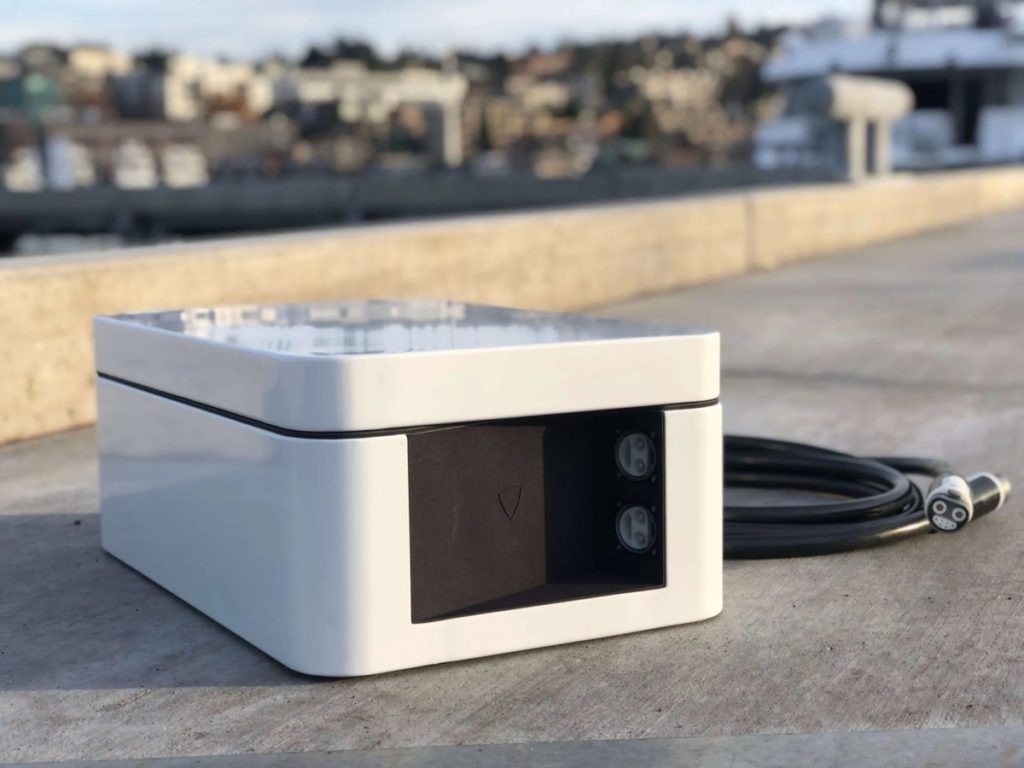
The system utilizes a proprietary charger that is included in the package and can charge using a 120 or 240 V connection. A single battery pack can charge from half to full using a 240 V connection in as little as 90 minutes. If universal logic applies here one could assume it takes 180 minutes to charge the battery from full depletion using a 240 V connection? I think it’s also worth noting the cost to charge the battery is said to only run a couple dollars and if we compare that to the fuel and oil cost per outing using a conventional gas motor, I can see the appeal of the electric outboard.
How much does the Pure Watercraft system cost?
The Pure Watercraft electric outboard system has a starting price of $16,500, which includes the outboard unit, throttle, cables and a single battery pack with charger. A two battery pack system will run you a cool $25,000, which is without a doubt a premium price to pay vs. conventional gas set ups. As I’ve stated before, this application is not for everyone and like any other cutting edge technology it often comes with a significant price as noted above. What I will say is these prices will inevitably come down as the technology gets better and batteries become far more capable than they are today.
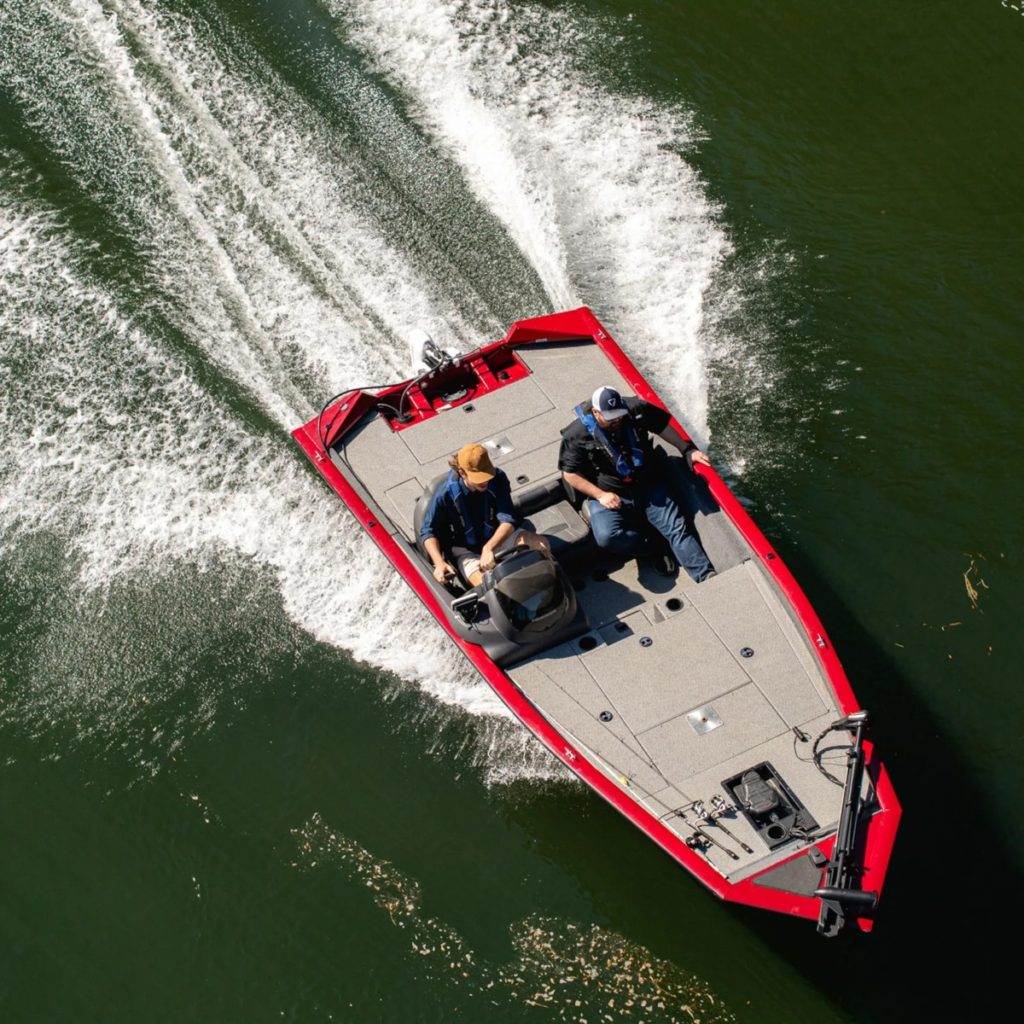
Final thoughts on the Pure Watercraft system
There is clearly a lot more to unpack with the Pure Watercraft electric outboard system and while I have attempted to address the most obvious differences there remains a lot more conversation. As with all my post, the goal is to bring new technologies to the forefront of our minds and encourage dialogue between my followers at the Charged Outdoors forum associated with this blog. If you’re interested in learning more about this set up and other you can visit the Pure Watercraft website.
Join us in the CO forum and offer your thoughts and real world boating experience and let’s dive further into this new technology.
